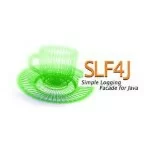Really Dynamic Declarative Components
In this short post I am going to focus on ADF dynamic declarative components. I mean a well known ADF tag af:declarativeComponent. It can be used as a pretty convenient way to design a page as a composition of page fragments and components. For example, our page can contain the following code snippet:
1 2 3 4 5 | <af:declarativeComponent viewId="PageFragment.jsff" id="dc1"> <f:facet name="TheFacet"> <af:button text="button 1" id="b1"/> </f:facet> </af:declarativeComponent> |
And the PageFragment.jsff is a usual page fragment like this one:
01 02 03 04 05 06 07 08 09 10 | <?xml version='1.0' encoding='UTF-8'?> <af:panelGroupLayout id="pgl1"> <af:outputText value="This is a page fragment. You can add your content to the following facet:" id="ot1"/> <af:facetRef facetName="TheFacet"/> </af:panelGroupLayout></jsp:root> |
If we need to be able to pass some parameters to a page fragment, we can define the fragment as a component:
01 02 03 04 05 06 07 08 09 10 11 12 13 14 15 16 17 18 19 20 21 | <?xml version='1.0' encoding='UTF-8'?><af:componentDef var="attrs"> <af:xmlContent> <facet> <facet-name>TheFacet</facet-name> </facet> <attribute> <attribute-name>Title</attribute-name> </attribute> </component> </af:xmlContent> <af:panelGroupLayout id="pgl1"> <af:outputText value="This is a component #{attrs.Title}. You can add your content to the following facet:" id="ot1"/> <af:facetRef facetName="TheFacet"/> </af:panelGroupLayout> </af:componentDef> </jsp:root> |
In this example we can pass the value of the Title attribute as it is shown in this code snippet:
1 2 3 4 5 6 7 | <af:declarativeComponent viewId="ComponentFragment.jsff" id="dc2" Title="Buttom Container"> <f:facet name="TheFacet"> <af:button text="button 2" id="b2"/> </f:facet> </af:declarativeComponent> |
And the most cool thing about this technique is that viewId attribute can accept not only static strings, but EL expressions as well:
1 2 3 4 5 6 | <af:declarativeComponent viewId="#{TheBean.fragmentViewID}" id="dc1"> <f:facet name="TheFacet"> <af:button text="button 1" id="b1"/> </f:facet> </af:declarativeComponent> |
1 2 3 | public String getFragmentViewID() { return "PageFragment.jsff";} |
Actually that’s why this construction is called dynamic, and that’s why this feature can be considered as a powerful tool for building well structured, flexible and dynamic UI.
That’s it!
| Reference: | Really Dynamic Declarative Components from our JCG partner Eugene Fedorenko at the ADF Practice blog. |





